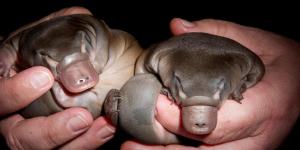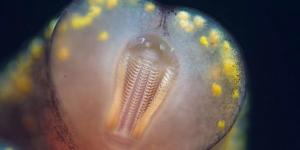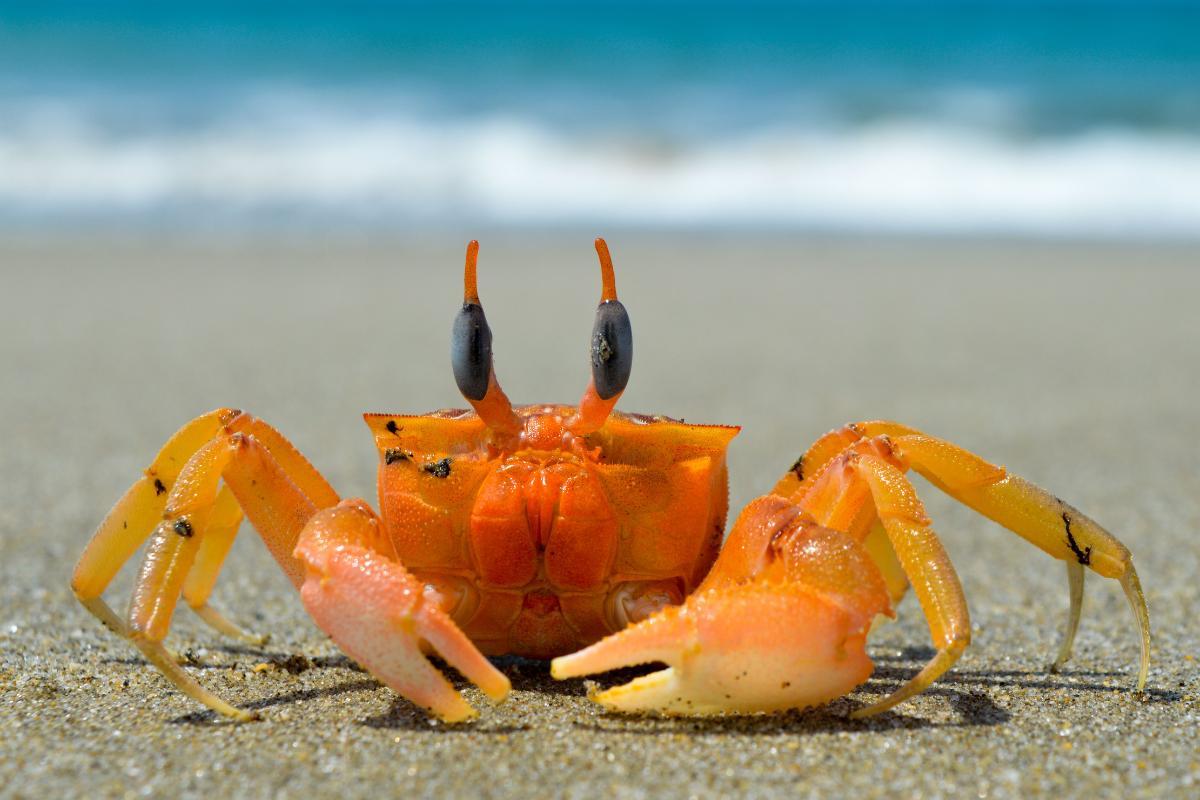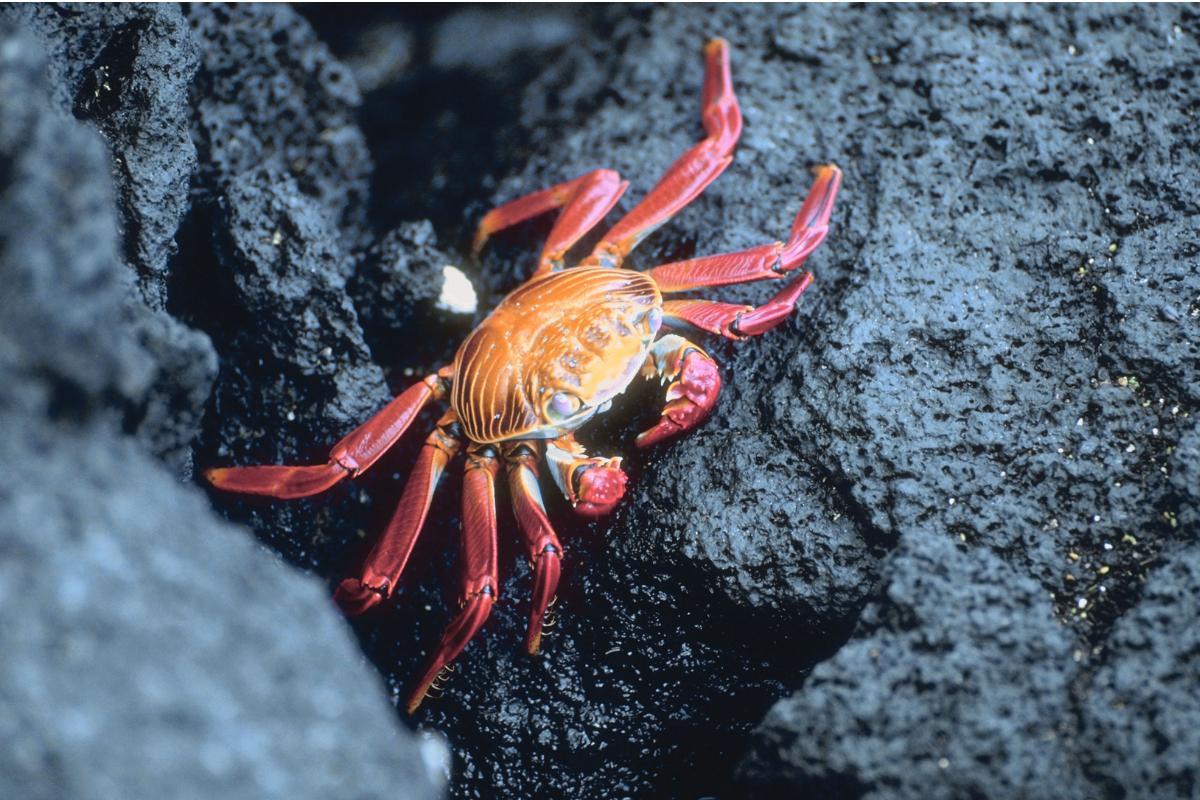Are Crabs Vertebrates or Invertebrates?


Crabs are invertebrate animals. Despite having a shell which acts as an exoskeleton, they do not have the definitive spinal columns which determine whether an animal is vertebrate or invertebrate. A lack of backbone is common to all crustacean species, not only crabs. While muscles are attached to bones in vertebrates, crab muscles are attached to their shell and other body parts to give them a structure. We better understand crab classification and anatomy at thedailyECO by asking are crabs vertebrates or invertebrates?
Is the crab a vertebrate or invertebrate animal?
The crab is an invertebrate animal. As aquatic crustaceans, crabs do not have a backbone. This is unlike vertebrate animals such as mammals, birds, fish, amphibians or reptiles. Bones are specific to vertebrate animals, but crabs do have an external shell known as a carapace which acts as an exoskeleton. Not only does it provide their body with form and structure, it acts as protection for their soft tissues. Like insects, crabs have segmented bodies and jointed legs, which give them great mobility.
Crustaceans are one of the most biologically successful groups of all zoological groups. They dominate marine ecosystems, just as insects dominate terrestrial areas. There are approximately 6,000 species of crabs that prefer to live in rocky pools, an excellent environment for them. The smallest crustaceans known to date are only 100 microns long and live on the antennae of copepods. The largest are the Japanese spider crabs (Macrocheira kaempferi) whose legs can reach more than 6.5 ft (2 m) in length.
Crabs are omnivores, feeding on a wide variety of organisms that include algae, mollusks, worms, fungi, bacteria, and even other crustaceans. Crabs typically live in brackish water, which is a mixture of fresh and salt water. They can also live in marine environments such as in the middle of the sea, as well as freshwater environments such as rivers.
As they are invertebrates, they do not have cardiovascular systems. These are exclusive to vertebrate animals. However, they do have circulatory systems which can be either open or closed. Crabs have an open circulatory system which uses hemolymph to transport nutrients around the body. Hemolymph is a similar material to blood in vertebrates, but the circulatory system is much more simple than the cardiovascular system. The organs are bathe directly in this fluid rather than in vessels which is why it is considered an open circulatory system.
To learn more background on the differences between vertebrates and invertebrates, check out our video below:

Why is the crab an invertebrate?
We know the basic reasons why a crab is classified as an invertebrate, but we look at the defining reasons in more detail below:
Absence of spinal column
Unlike vertebrate animals such as mammals, birds, fish, amphibians and reptiles, crabs lack a backbone or spinal column. This internal structure protects the spinal cord and is the defining characteristic of vertebrates. Its absence in crabs classifies them as invertebrates.
External exoskeleton
Like other arthropods, crabs have an external exoskeleton composed primarily of chitin. This exoskeleton provides support and protection to the animal, but does not serve as an internal vertebral column found in vertebrates.
Belonging to the phylum Arthropoda
Crabs belong to the phylum Arthropoda, which includes numerous invertebrates, such as insects, arachnids and other types of crustaceans. Sharing this taxonomic classification with other invertebrates supports the status of crabs as animals without a backbone.
Diversity and adaptability of invertebrates
The great morphological diversity and adaptability of crabs to different environments is due to their status as invertebrates. So too is their evolutionary success, i.e. their continued survival. Phylogenetic studies confirm this classification, placing crabs within the broader group of invertebrate arthropods.
Crab taxonomy
Taxonomic groupings exist to help us better understand how living things are connected or different from each other in nature. The taxonomy of crabs is as follows:
- Kingdom: Animalia
- Phylum: Arthropoda (commonly known as arthropods)
- Subphylum: Crustacea
- Family: Portunidae
- Order: Decapoda
Take a look at our article on the different types of crabs, all of which fall under the above taxonomic classification.

Characteristics of the crab
We know the characteristics which make a crab an invertebrate, but there are many different parts of a crab. We look at the invertebrate anatomy of crabs in more detail below:
Crab shell and appendages
The morphology of the carapace and appendages of crabs is often relevant to their taxonomic classification. The cephalothoracic carapace often extends forward into a rostrum-like structure. This may or may not be toothed and will vary in length. The spines and grooves present in different regions of the carapace are also useful features for differentiating between species and groups. In addition, we can distinguish between types of crab species due to the shape and development of the eyestalks, as well as the presence or absence of spines between them.
Crab legs morphology
The last five pairs of crab legs are located on the thorax and known as pereiopods. These are appendages whose morphology has elements of taxonomic interest. Their shape and development vary in relation to their way of life and survival strategies. They may or may not be similar. Even when in pairs, one leg may certain marked differences. In many cases, the first pair of pereiopods have very well-developed pincers, known as crab claws.
Reproduction and life cycle of crabs
Crabs attract their mates through pheromones, as well as visual, acoustic and vibratory signals. Land crabs usually release their larvae into the ocean. After the larval stage, juvenile crabs must make this migration in reverse. Crabs must regularly shed their hard shells to allow for growth.
Sensory organs
Crabs possess different types of sensory receptors, such as mechanoreceptors that detect pressure variations and water currents. They also have chemoreceptors, thermoreceptors and photoreceptors which detect chemicals, heat and light, respectively. They have a nauplial eye during the larval stage and compound eyes when they reach adulthood.
Now that you know that crabs are invertebrate animals and you know the reasons why they are classified in this way, you may want to learn more about which animals are vertebrates and which are not. You can do so with our article asking do snakes have a backbone?
If you want to read similar articles to Are Crabs Vertebrates or Invertebrates?, we recommend you visit our Facts about animals category.
- García, J., & Ramírez, A. (2015). Order Decapoda. IDE@ - SEA Journal, No. 80. 1–17.
http://sea-entomologia.org/IDE@/revista_80.pdf - Padilla, D. (2023). Invertebrate Zoology. University of Nariño.
https://sired.udenar.edu.co/7636/1/zoologia%20de%20invertebrados_Diagramaci%C3%B3n%20FINAL%201.pdf - Basu. (2020). Classification & Characteristics of Crab.
https://www.basu.org.in/wp-content/uploads/2020/11/Classification-of-Crab.pdf






